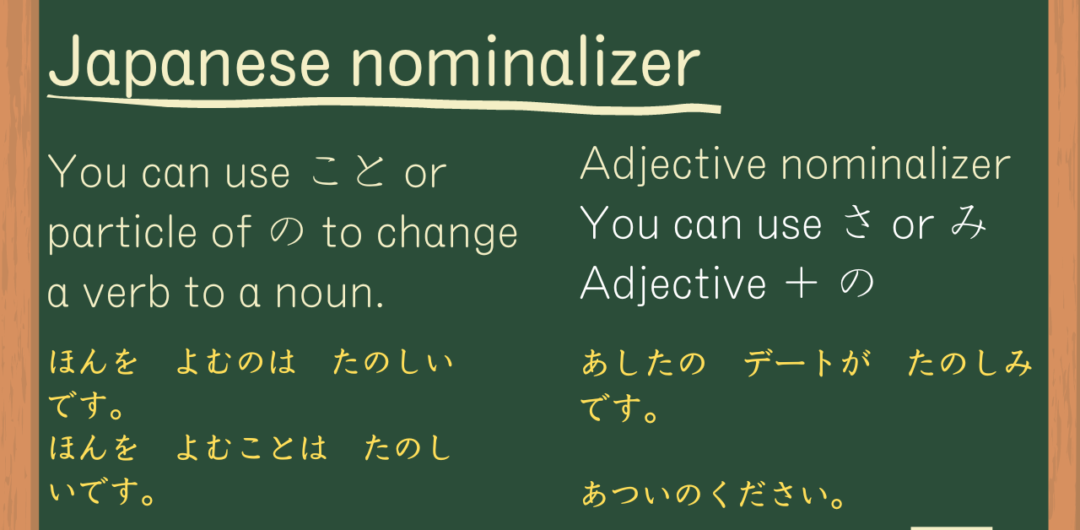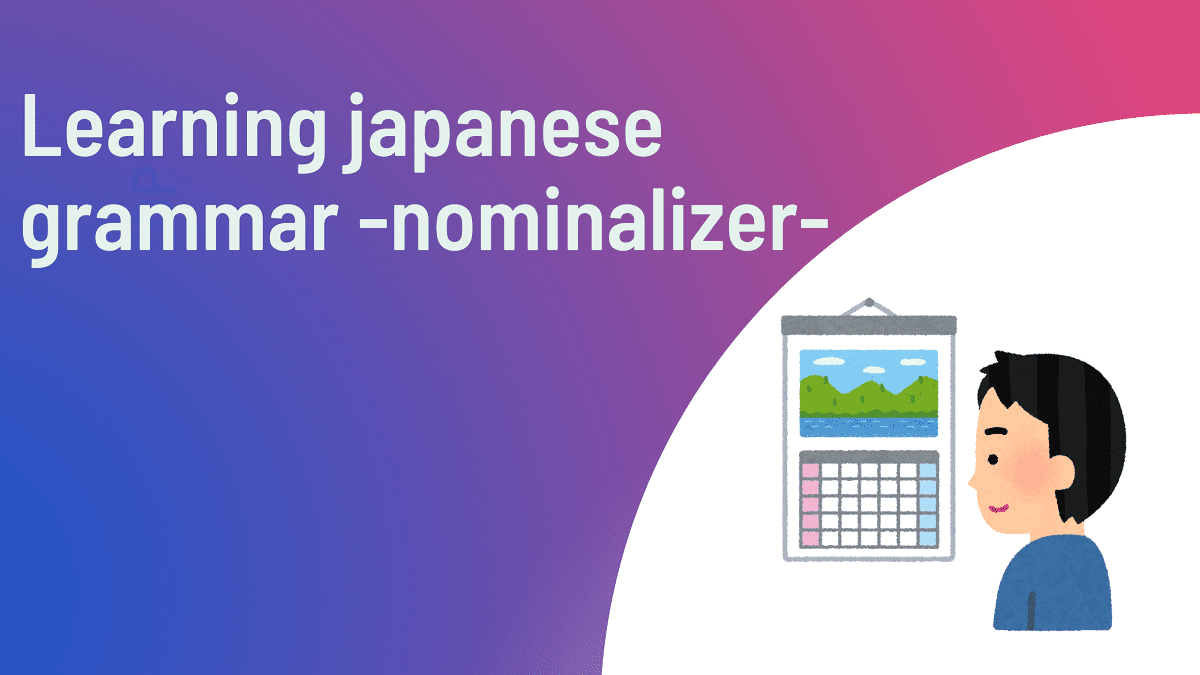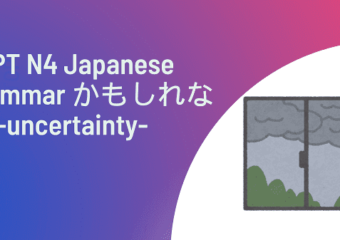Do you know how to change verbs or adjectives into nouns?
The rule is easy.
I have been teaching Japanese to beginners for three years, so when you finish reading this article, you will understand what nominalizer is and how to change verbs and adjectives into nouns.
*Are you looking for a place to practice Japanese?
Youtonihongo is for you.
You may receive one free 30-minute trial lesson.

The free trial class online
We offer online classes and in person classes
what is nominalizer?
Nominalizer means the process of producing a noun from another word.
In English grammar, we may produce a noun by using a suffix.
For example, act >>actor, translate >> translator, employ >> employment, employer, employee.
The other way to make noun is by using gerunds. (The form of -ing)
For example, eat >> eating, drink >> drinking, run >> running.
Let’s see Japanese nominalizer.
Verb + の or こと
You can use こと or particle of の to change a verb into a noun.
For example, たべるの, のむの, はしるの, たべること, のむこと, or はしること.
Japanese:
ほんを よむのは たのしい。
ほんを よむことは たのしい。
English:
Reading a book is fun.
Like this example, の or こと connect with a verb and we can use them as a noun.
It makes a relative clause.
*A clause mean a group of words that includes a subject and verb.
In this case, ほんをよむのは or ほんをよむことは(Reading a book) are subjects of this sentence.
Please read this article to know “verb + の” or “verbこと” more.
What’s the difference between こと and の?
Adjective nominalizer
I will teach you two ways to change adjectives to nouns.
- Use さ or み.
- Adjective + の.
Use さ or み
イadjい+さ or み
ナadj + さ or み
If you don’t know the difference between イadjectives and ナadjectives, please read this article.
Learning Japanese grammar-adjectives conjugation
We use さ to change adjectives into nouns.
Words such as width, speed, length, weight and height are often used when we talk about things like size or speed.
When we use adjectives about feelings such as sadness, happiness or pain, we use さ or み.
| English | Japanese | Nominalizer |
| Heavy | おもい | おもさ |
| Hot | あつい | あつさ |
| Cold | さむい | さむさ |
| Convenient | べんり | べんりさ |
| Kind | やさしい | やさしさ |
| Sad | かなしい | かなしさ かなしみ |
| Pain | くるしい | くるしさ くるしみ |
Japanese:
あつさ さむさも ひがんまで
English:
Summer heat and winter cold don’t last after the equinox week.
This is a Japanese proverb.
あつい (hot) and さむい (cold) are adjectives, so they can’t be a subject.
We need to change them into nouns, which is あつさ and さむさ.
The difference between さ and み
When the adjectives are about feeling, they usually can be changed to nouns using さ or み.
Adjectiveさ usually expresses general feeling.
For example,
Japanese:
にほんごの たのしさを つたえたい。
English:
I would like you to know how fun Japanese is.
This feeling is general rather than personal feeling.
Therefore, たのしさ is better than たのしみ.
On the other hand, adjectiveみ usually expresses a personal feeling.
Let’s see another example.
Japanese:
あしたの デートが たのしみです。
English:
I am looking forward to date tomorrow.
This feeling is personal and the feeling would change depending on the person.
Adjective + の
We can use の as a noun in a sentence that modifies the relevant noun.
We have discussed how to use 「の」before.
if you haven’t read it yet, please read this article first.
Let’s think about one example.
Someone asks you if you would like hot coffee or ice coffee.
The answer is obviously about the coffee, so you don’t have to say coffee again.
Japanese:
Q. あつい コーヒーと つめたい コーヒーと どちらが ほしいですか。
A. あつい コーヒーを ください。>>> あついの ください。
English:
Q. Which would you like hot coffee or cold coffee?
A. Hot one please.
あついの can be thought as a noun.
Let’s see another example.
There are many umbrellas and someone asked you which umbrella is yours.
When you answer the red umbrella is yours, obviously you mention about the umbrella.
Thus, you don’t have to say かさ again.
Japanese:
Q. どれが あなたの かさですか。
A. あかい かさです。>>> あかいの です。
English:
Q. Which umbrella is yours?
A. The red one.
あかいの can be thought as a noun.
conclusion

You can use こと or particle of の to change a verb to a noun.
イadjい+さ or み
ナadj + さ or み
We can use の as a noun in a sentence that modifies the relevant noun.
Excercise
1.CNタワーの(たかいです→ )は、553メートルです。
2.Q. どれが あなたの かばんですか。
A. その (おおきいです→ )です。
3.どうぶつを (みます→ )は たのしい。
4.あなたの (やさしいです→ )がうれしいです。
5.さくぶんを (かきます→ )は すきじゃありません。
Answer
1.CNタワーの(たかいです→たかさ)は、553メートルです。
2.Q. どれが あなたの かばんですか。
A. その (おおきいです→おおきいの)です。
3.どうぶつを (みます→みるの or みること)は たのしい。
4.あなたの (やさしいです→やさしさ)がうれしいです。
5.さくぶんを (かきます→かくのは or かくこと)は すきじゃありません。
If you would like to practice conjugation in conversation, please let me know.
I teach Japanese in person or online.
You will have chances to use Japanese in my class.
↓Please feel free to contact me.

The free trial class online
We offer online classes and in person classes



